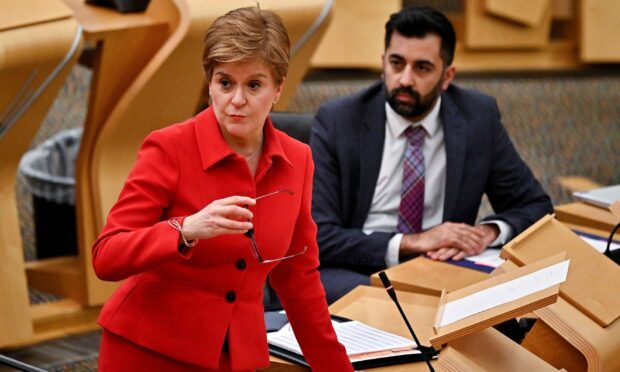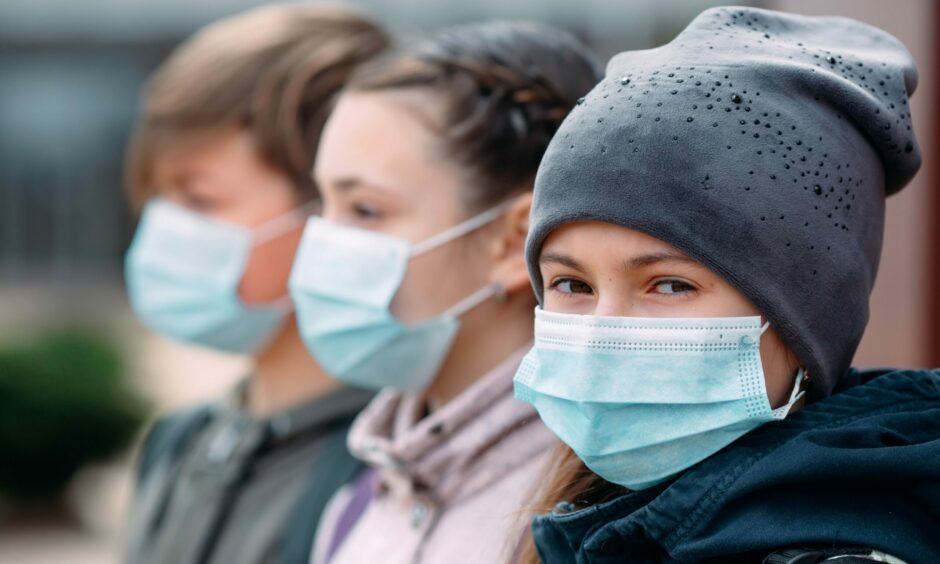Nicola Sturgeon is being urged to relax Covid rules in the first review of Scotland’s restrictions this year.
The First Minister imposed fresh virus curbs after Christmas due to fears over the highly transmissible Omicron strain.
Crowds at football games were cut down to a maximum of 500, nightclubs were shut, and pubs were forced to return to table service.
Ms Sturgeon has repeatedly urged Scots to cut down on meeting with friends and family and avoid going out where possible to help bring down the infection rate.
However, business groups warned ahead of Tuesday’s update the restrictions failed to make a “meaningful difference” to infection levels and are causing “enormous damage” to some sectors.
Here’s what you can expect from the SNP leader’s update to MSPs on January 11.
Covid rules could be changed
It’s possible the First Minister may alter current virus rules which were put in place after Boxing Day.
The SNP leader has previously said she does not want to keep Covid measures in place for longer than is necessary.
But the First Minister has also refused to rule out extending rules aimed at stopping the Omicron surge.
The restrictions introduced by the Scottish Government last month were initially put in place for a period of three weeks.
The new Covid curbs north of the border and in Wales and Northern Ireland came despite Boris Johnson opting against any new virus measures in England.
Ms Sturgeon had indicated she may have gone further with restrictions if more financial support had been available from Westminster.
Latest on case numbers and hospital rates
Ms Sturgeon will update MSPs on Covid infection numbers tomorrow as cases remain high across the country.
It was estimated last week that up to one in 20 Scots were battling coronavirus.
More than 11,000 cases have been confirmed in the past 24 hours.
A total of 1,432 people were in hospital overnight, with 54 in intensive care.
Data last week revealed how many patients had been hospital directly due to the virus – compared to others who caught the bug while already receiving treatment.
While hospital rates remain low compared to the number of cases at other points in the pandemic, Ms Sturgeon has warned the NHS could still be overwhelmed due to staff absences.
But there were some glimmers of hope over the weekend as Scotland recorded less than 10,000 cases in a single day for the first time in 2022 over the weekend.
Changes to self-isolation rules unlikely
The First Minister confirmed last Tuesday that infected Scots would only have to self-isolate for seven days.
The SNP leader revealed those who have the virus can exit quarantine after a week instead of ten days if they test negative twice.
But health secretary Humza Yousaf said yesterday the government is not considering cutting the isolation requirements down to just five days.
We’re always guided by the science.”
– Humza Yousaf MSP
It comes despite the Tory education minister Nadhim Zahawi backing the proposed move to help relieve staff shortages.
Mr Yousaf said: “We’ve literally just made the change from 10 days to seven days. I think it’d be sensible to see the impact and the effect of that.
“But, clearly, we’re always guided by the science.”
Last week the First Minister said: “These changes are significant.
“However, at this stage of the pandemic they strike an appropriate balance between the continued importance of self-isolation, and reducing the disruption self isolation causes in the economy and critical services.”

